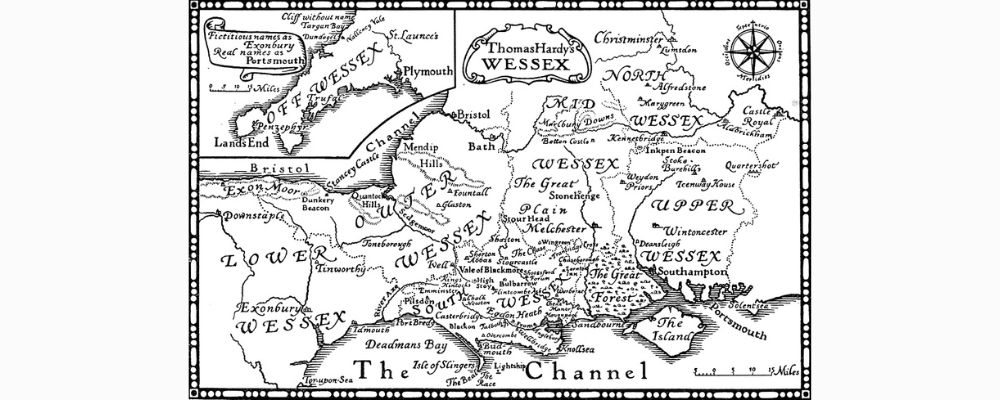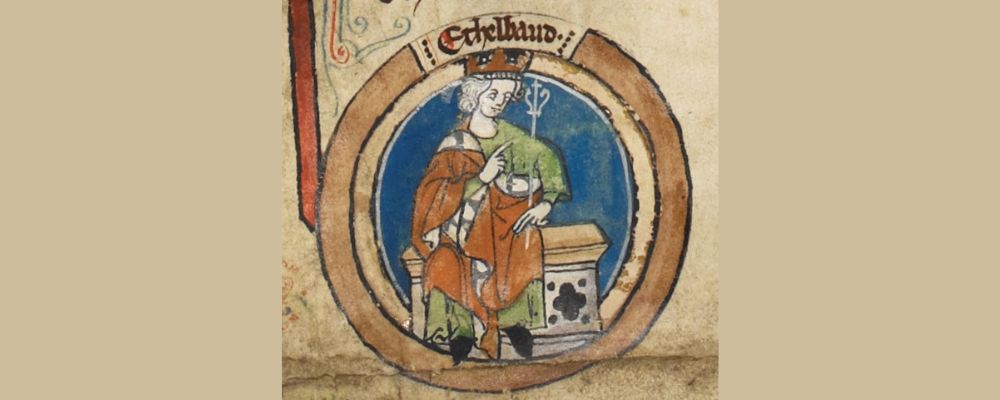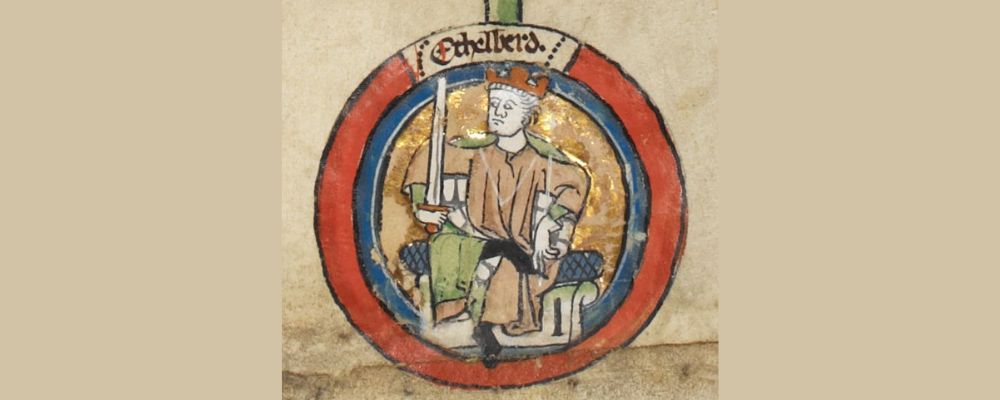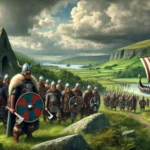If you watch the History Channel’s Vikings, you will notice that it is the kings of Wessex, rather than the other areas of England, that are held up as the main leaders of the resistance against the Danish encroachment.
While the TV show takes a lot of liberties with its timeline, this is a reflection of history. While the other parts of Anglo Saxon England fell under Viking control, Wessex, in the south of England, managed to stop the continued advance of the Vikings, and even reclaim some of the other English territories that the Vikings had taken.
This led to the King of Wessex, Alfred the Great, being declared the king of all of England in 886, effectively making the title King of Wessex redundant.
Let’s take a closer look at the Kings of Wessex and their role in containing the Viking invasion and domination of England.

Vikings in England Timeline
793 – It is generally agreed that this was the first major Viking raid on England, with Danish Vikings discovering great wealth at the monastery at Lindisfarne in Northumberland. This exposed the Vikings to a rich new territory, and raids would become increasingly frequent over the coming years.
838 – The Danes began to raid further south into the lands of the west Saxons, but pulled back after a major defeat by King Ecgberht of Wessex in 838. He also helped prevent Wessex being absorbed by other Anglo-Saxon kingdoms.
850 – After more than 50 years of raiding, the Vikings started to extend their reach in England by wintering there rather than returning home. This inevitably resulted in the creation of Viking settlements, mostly in the north and along the east coast.
851 – King Aethelwulf of Wessex won a major victory against the Vikings in the battle of Aclea, which prevented the Vikings from encroaching into the territory of the west Saxons
865 – Following the death of Ragnar Lothbrok at the hands of King Aella of Northumbria, Ragnar’s sons assemble a Great Heathen Army to attack England and seek revenge.
866 – The Vikings, led by Ivar the Boneless, capture York, called Jorvik, and it becomes the Viking capital on English soil.
867-875 – Following early successes and utilizing their foothold in York, the Vikings begin to capture further territories in East Anglia and Mercia. These territories fall under Viking rule, which was known as Danelaw in England.
877 – Following major Viking encroachment into Wessex starting in 871, King Alfred the Great was able to push the Danes out of Wessex territory. They retreat to York and start to consolidate their lands there.
880 – The Danish Viking Guthfirth becomes the king of the Viking empire in England and coexists relatively peacefully with his neighbors.
884 – Guthfrith attacks King Alfred of Wessex but is defeated. Alfred strikes a peace deal with the Vikings. The borders of Danelaw and Wessex are established, and Guthfrith agrees to convert to Christianity.
886 – King Alfred takes London back from the Vikings and begins to style himself as the King of the Anglo-Saxons, putting an end to the title King of Wessex.
Kings of Wessex
Wessex was reportedly established as an independent kingdom by the Cerdicing dynasty in 519. Their line was deposed in 645, and Merica briefly ruled the region for three years until the Cerdicing dynasty was established in 648.
Wessex covered much of southern England, including modern Devon, Hampshire, Dorset, Somerset, and Sussex.
The first of this new line of kings who had to deal with the Vikings was King Ecgberht.

King Ecgberht of Wessex (802-839)
Ecgbert was the son of King Edmund of Kent, a brother of a previous Wessex king. He was exiled to the court of Charlemagne in France during the reign of his predecessor Beorhtric, which is believed to have resulted in an extensive education.
Ecgberht returned to Wessex as king following the death of Beorhtric in 802. He managed to protect the kingdom from the Mercian kings, who had been encroaching on their territory and even managed to expand Wessex.
He took many Mercian territories and became the direct ruler of Mercia for a short period in 829, but could not hold the territory. However, he did permanently take Kent, Sussex, and surry. For this reason, the Anglo Saxon Chronicle describes Ecgberht as the ruler of a great Anglo-Saxon territory.
He faced the Vikings in the 830s. He lost to the Vikings at Carhampton in 836, but then had a decisive victory over them at the Battle of Kingston Down in Cornwall in 838. This also allowed him to incorporate large areas of Cornwall and southern England into Wessex.

King Aethelwulf of Wessex (839-858)
Before the death of his father Ecgberht, Aethulwulf was already the sub-king of Kent. When he succeeded to power, he was the first son to succeed his father to the throne in the west Saxon territory since 641.
The Vikings were not making much trouble in Wessex during his reign, but Aethulwulf did have a decisive victory against them at the Battle of Aclea in 851 with the help fo his eldest son, who died shortly after. It is the first major British sea battle on record.
Aethuwulf was more concerned with spiritual matters. In 855, he made a pilgrimage to Rome with the intention of donating one-tenth of his property to his subjects on his return. He left the kingdom in the hands of his son Aethelbald. On his return, he met and married Judith, the daughter of the west Frankish king Charles the Bald.
When Aethelwulf returned, his son refused to give up power in his favor, and they were forced to split the kingdom, with Aethuleulf taking the east and Aethelbald the west. The kingdom would only be reunited once both men died.

King Aethelbald of Wessex (855-860)
When Aethulwulf left on his pilgrimage to Rome, he left his Athelbad as the King of Wessex. When his father returned the following year, Aethelbald refused to give up the throne. They divided the territory between them, while Athelbad’s younger brother Aethelberht was made the King of Kent.
When Aethulwulf died in 858, Aethelbald continued to rule. He also took his father’s widow, Judith, as his own wife. She was only 12 when she married Aethulwulf, so she was still a young queen. Nevertheless, the union was widely criticized at the time.

King Aethelberht of Wessex (860-865)
Aethelberht became the king of all Wessex and Kent following the death of his brother. His short reign was plagued by Viking raids. In 86, a Viking army sailed from the river Somme to England, where they sacked Winchester. Aethelberht eventually defeated them. In 864, the Vikings camped at the Thanet district in Ket and ravaged the surrounding area. Aethelberht spent the final year of his life driving the raiders out of Kent.

King Aethelred of Wessex (865-871)
Aethelred succeeded his older brother as king following his death in 865. This coincided with the arrival of the Great Heathen Army in England. As they quickly took Northumbria and East Anglia, the Viking threat must have been palpable in Wessex.
The Vikings launched a major attack on Wessex in 870. Aethelred met the Vikings in a series of battles in early 871, with no one gaining a decisive victory. Aethelwulf died at Easter in 871.

King Alfred the Great of Wessex (871-899)
The fifth of Aethulwulf’s sons succeeded to the throne in 871, Alfred king of Wessex, who would later be known as the Great. Wessex was in the middle of a conflict with the Vikings at this moment, so Alfred paid them off in 871 to give himself time to regroup.
In 878, he had a major defeat over the Vikings at the Battle of Edington. This allowed him to push them back into Northumbria and East Anglia. He made a treaty with the Vikings that defined the territory of Wessex and the territory of Danelaw. He also saw the Viking leader convert to Christianity.
Despite the treaty, minor conflicts with the Vikings continued, but Alfred not only managed to defend his territory, but to take other territories back from the Vikings. When he took London in 886, he began to style himself as King of the Anglo Saxons, ending the title of King of Wessex.
He was succeeded by his son Edward the Elder as King of the Anglo -Saxons following his death in 899.
But Alfred the Great was such an important king, that we have already dedicated a full article to the monarch. Read it here.

Viking Nemeses
We spend most of our time talking about Viking history, but part of that story is the people who stood up to them, like the west Saxon kings. The Kings of Wessex had a huge impact on the course of history, as it seems that without them, England would have been fully colonized by the Vikings. Today, we would be talking about Vikings rather than Anglo-Saxon England.







